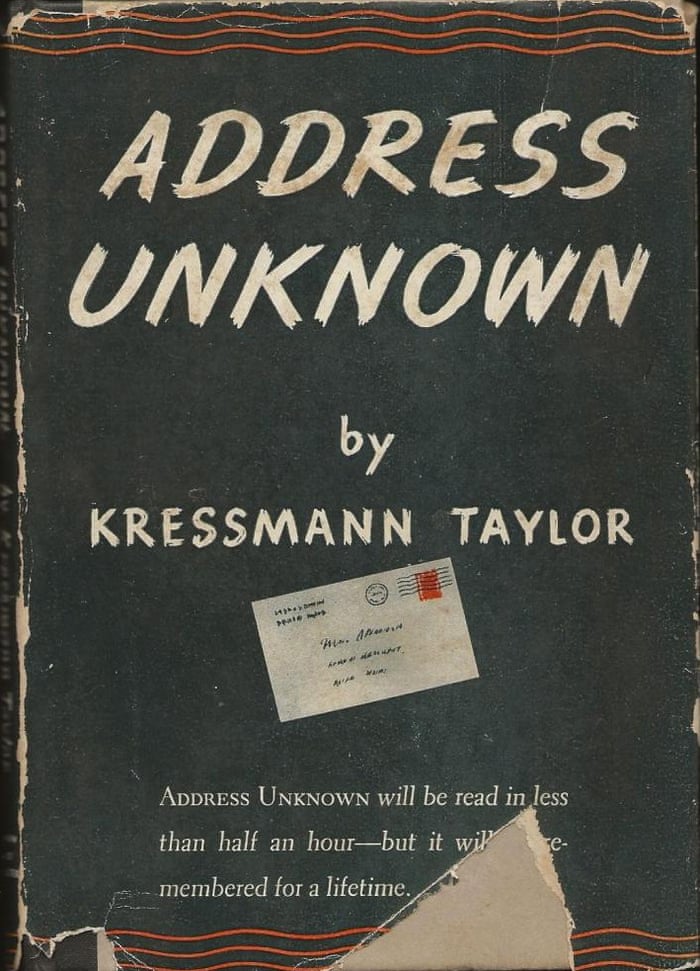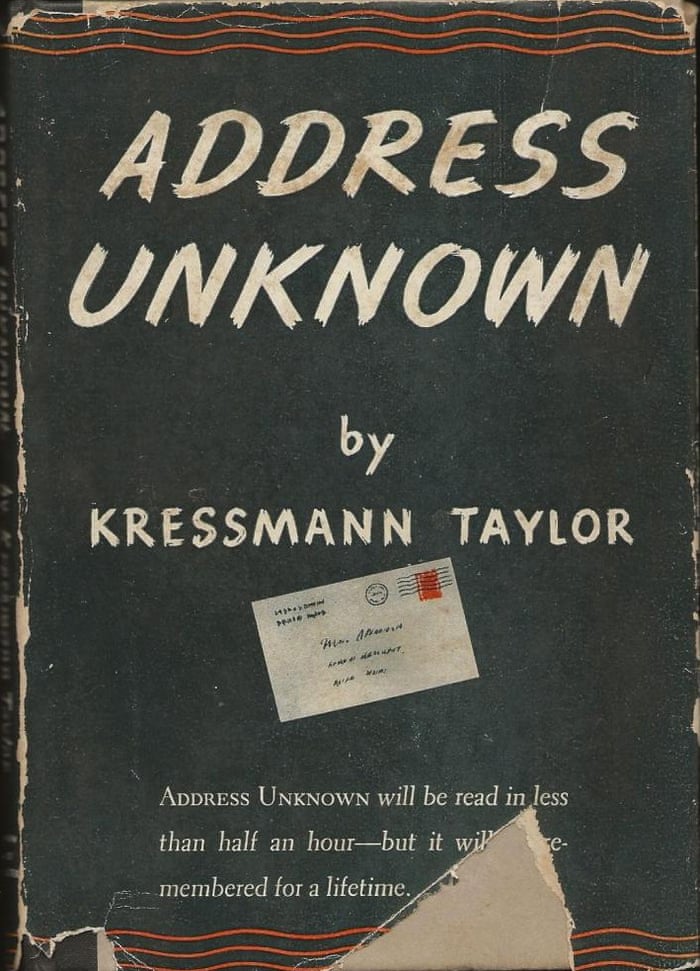

“Address Unknown” by Kathrine Kressmann Taylor is a fictional tale told through a series of letters between Jewish art dealer Max Eisenstein, who lives in San Francisco, and his friend and business partner Martin Schulse, who recently moved back to Germany in the early 1930s. Although originally published in 1938 in Story magazine, as well as being the basis of a 1944 film with the same name, the book was recently republished on June 29 with an introduction by Margot Livesey.
Though the storyline seemed intriguing, the delivery was overall underwhelming for a novel. The letter-writing style added some depth. There seemed to be little buildup to the main conflict, leaving the reader with hardly more information than that given in the summary. More description of how Martin’s family settled in Germany and how Max was running the Schulse-Eisenstein Art Galleries without Martin could have established a deeper understanding of the characters’ dynamic, and therefore given more importance to the external factors changing this dynamic.
The author skillfully used Griselle, Max’s sister, to illustrate the extent of Martin’s change in beliefs by hinting at a close relationship she shared with him in the past and contrasting that with the way he treats her in Germany. More subplots like this would have enhanced the story and made it more engaging.
Though the letter-writing style didn’t lend itself to extensive descriptions of the characters, Kressmann Taylor added depth to the story through the headings, salutations, closings and other characteristics of the letters. For instance, when Max and Martin’s dynamic changes, he also changes how he signs off his letters. The thoughts in the letters themselves were also well-illustrated as they were not bluntly stated, but rather described in a way that seemed like the character’s unrefined stream of consciousness, consistent with the conversational style of the novel.
However, the author could have developed a distinct writing style for each character, which would have helped characterize the two protagonists. The author also seemed to straddle between portraying a direct conversation, with letters written as responses building off one another, and isolated letters, perhaps written once a month to update the other on the general state of affairs. Featuring letters or notices from other sources, such as letters from Griselle or newspaper clippings, would have clearly defined the novel as more of a miscellaneous collection of letters detailing the event, as well as added other perspectives on the setting and characters.
Compared to other novels set in the World War II era such as “The Boy in the Striped Pajamas” and “The Book Thief,” “Address Unknown” offers a unique viewpoint as neither character directly suffers under the anti-Semitic policies of Germany, but both characters are influenced nonetheless. Unlike most novels, which are concentrated in Germany, the story offers a more holistic view, and because it was written at the time of the events, provides a realistic representation of how people around the world might have felt as they learned more about Hitler’s rise in Germany.
The new introduction offers Livesey’s own experiences growing up in Scotland after World War II and some interesting background on the novel, such as the original publishing listing the author as “Kressman Taylor” to avoid identifying her as a woman. More importantly, the introduction notes the current relevance, especially concerning the recent understanding that Livesey and many others have had about the hardships African Americans face.
Though I found that the story could have been presented in a more nuanced way, it is a great novel to read in one sitting, with an intriguing and important storyline and a satisfactory conclusion. Overall, I would rate the story three out of five stars, as it is too short to do justice to the initial complexities of the storyline, but it is still a satisfactory story on its own.



